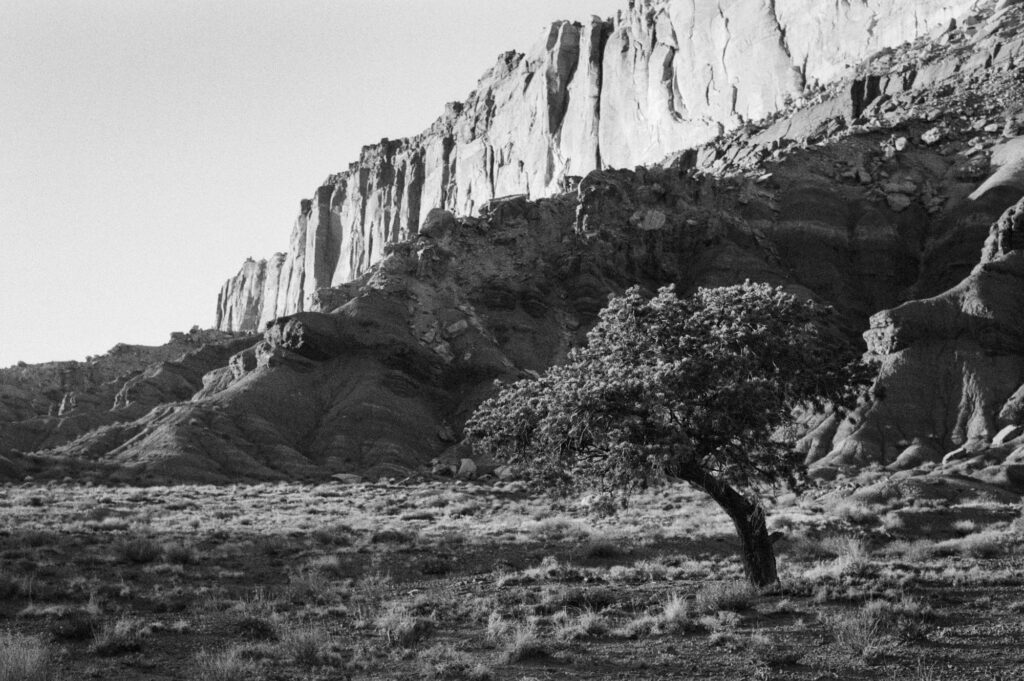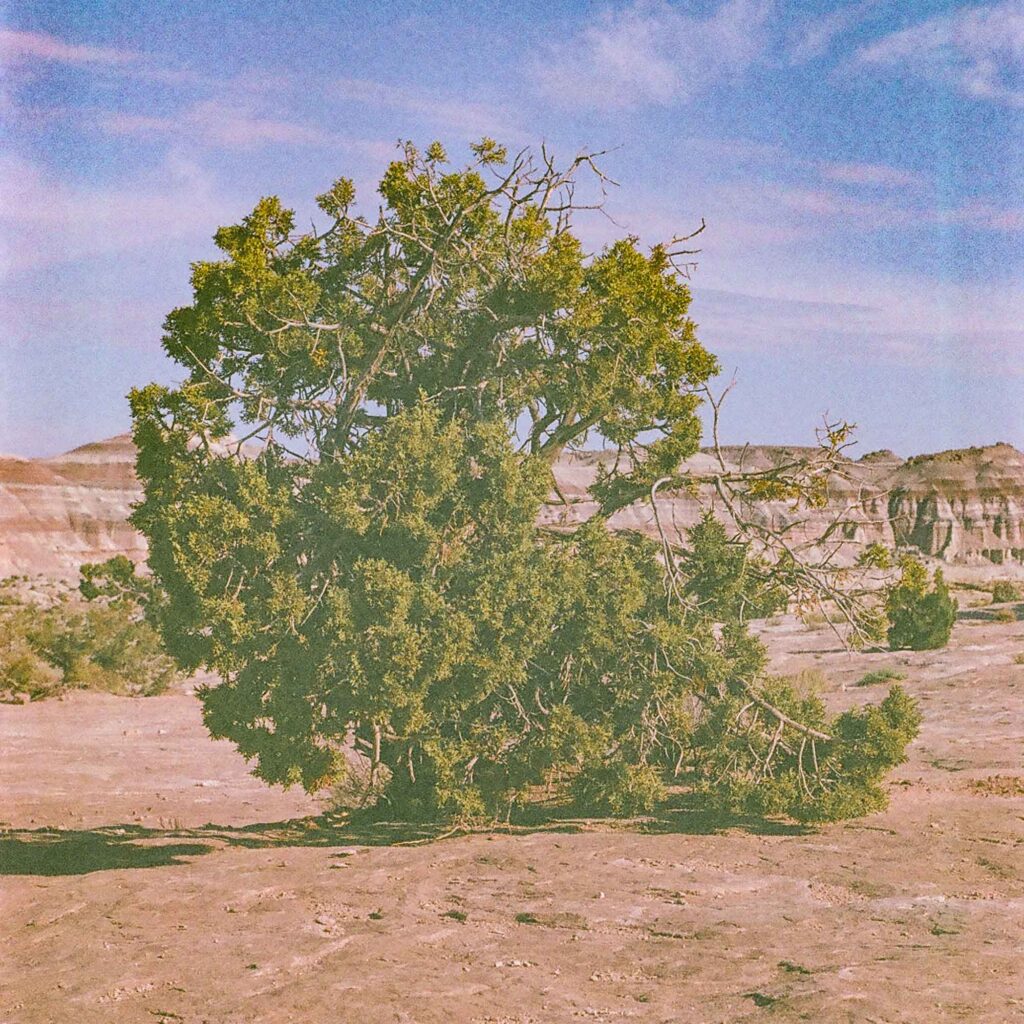
A lone Pinion Pine in Capitol Reef National Park
Last week week I moved from western Washington to northern Arizona.
This was a bittersweet move. I am beyond excited to be back in the South West with its beautiful scenery and stunning cultures. But I will miss the mountains of Washington and the wonderful Salish Sea.
Regardless, this meant I had a stunning 21-hour drive taking me through some of my favorite parts of the country.
I am particularly moved by the drive between Nephi, Utah and Flagstaff, Arizona. It’s an area I have a lot of nostalgia for, and I struggle to not gawk nonstop out the window of the car.
A Site to See
So right after leaving Kanab I was doing my usual practice of admiring the Pinion-Juniper forest when I noticed something.
Not far off of the highway there was a clean strip of land that was all but devoid of trees. There was almost a hard line of where the trees stopped. This wasn’t the area cleared around the highway, but further out.
It only took me a few seconds to realize what I must be looking at, and after some closer inspection, I saw the piles of broken trees that confirmed my suspicions.
What I was looking at were areas of habitat restoration. Haven’t heard of the Bureau of Land Management’s (BLM) habitat restoration in southern Utah? Here’s a video.
Yes, those are two bulldozers dragging an anchor chain between them.
Thin Reasoning
For those of you who may not have watched the video: “habitat restoration,” as the BLM likes to call it, is the practice of removing vegetation in an area to supposedly improve wildlife habitat and watersheds.
While this can be as simple as some workers going out on foot and removing unwanted plants (the most expensive option) it is more frequently the practices of “chaining,” bulldozing, and mastication.
That’s all fine and dandy. I mean, who doesn’t want better habitat for wild animals?
Here is the problem though. The scientific backing to this practice is super weak. In fact, most studies on the practice have either shown a negative or non-significant effect.
Except when it comes to cattle. Cattle and their ranchers like vegetation removal.
So let’s put that in perspective. Each year, millions of dollars are spent to rip down pristine forests to maybe (but probably not) help wildlife and watersheds.
See the problem here?
Land Without a Voice

A Juniper growing out of rock on the border of Capitol Reef and BLM land
I wish that was all.
This year (2020) the BLM has moved to add new policies that would allow them to chain up to 10,000 acres at a time without any environmental review or public comment period.
That’s the size of a town. And not a small one.
They are able to do this by expanding exemptions that already exist in the BLM that allows small tasks (like moving a visitor center lawn) to be done without public comment or environmental review.
But chaining 10,000 acres of the dwindling sagebrush steppe is a far cry from mowing a lawn.
Removing these Juniper forests is disheartening, but removing public opinion from public land management is dastardly.
This is not Utah’s land, the government’s land, your land, or my land This is our land. And the public needs to be able to have its say because public land is for the good of all citizens.
This limiting of public opinion on lands is sadly not unique to vegetation removal.
On Friday, April 30th, 2019 the BLM approved the paving of 7 1/2 miles of the Burr Trail road adjacent to Capitol Reef National Park. They then did not make this decision public until Monday afternoon, at which point 2/3 of the road was already paved thanks to equipment that the county had intentionally staged at the road awaiting the BLM’s decision.
Why were they so eager to pave this road? Simple: it helps mining.
But mining companies are only one voice. And cattle ranchers are only once voice.
I have as much say over the public land in Utah as someone in Vermont. That’s the point of public land.
Taking the public voices out of public lands is wrong.
Chaining thousands of acres of land without an environmental impact review is wrong.
Prioritizing the gains of private companies over the public’s longterm use of their lands is wrong.
So what can we do?
How We Can Take Action Today
I always struggle when I hear about something negative but don’t know how I can help (especially with limited financial resources to donate). So here are some actions you could take today to help!
Firstly, Southern Utah Wilderness Alliance has a whole page where you can read about vegetation removal and I encourage you to learn more there.
SUWA is also running a campaign encouraging those willing to write a letter to the editor of their local newspapers to help spread the word about vegetation removal and the purposed law change. They have a whole webinar about writing letters to the editor here, as well as a PDF guide.
You can take the opportunity to comment on BLM projects when they are happening. You can find the BLM’s page on open public commenting here. And here is a guide to giving great public comments.
You can also call, text, email, write, or meet with your representatives and ask them to support America’s Redrock Wilderness Act and public lands in general. Or thank them for what they’re already doing.
Find more opportunities on our take action page.
Every little bit helps.
Have a story you want to share? Leave a comment, send us an email, or share your experience on Instagram with #slowtheparks
Additional Resources:
Forests on Utah’s public lands may soon be torn out. Here’s why.—National Geographic

Thank you for raising my awareness of these disturbing events. And thank you more for providing detailed information about actions I can help. Very well done!
You’re welcome! Thank you for reading and taking action!
Thanks for this excellent article. Folks in the PNW working to protect public lands will miss your energy, creativity and positive attitude. All the best as you set down new roots in AZ.
You’re welcome! And thank you. I certainly hope to be back in the PNW one day!
Pingback: Public Lands Vs. The Executive Branch | Slow the Parks